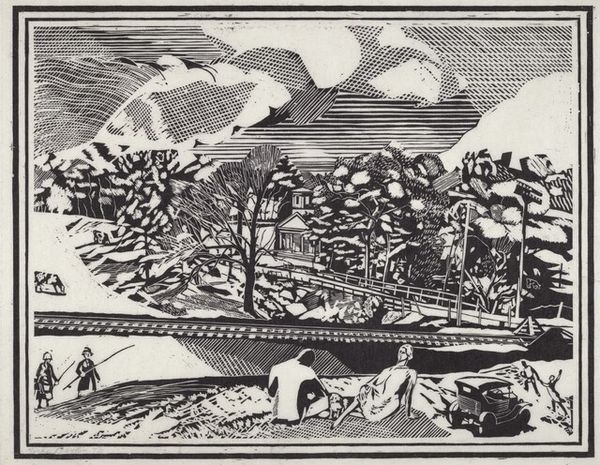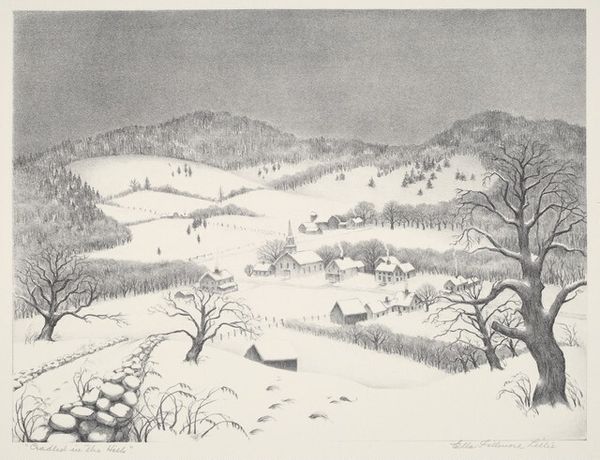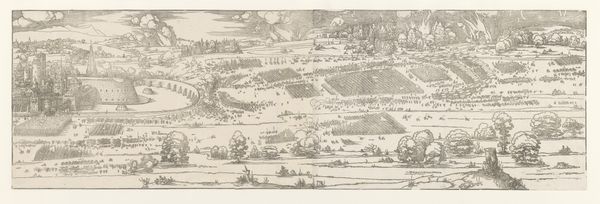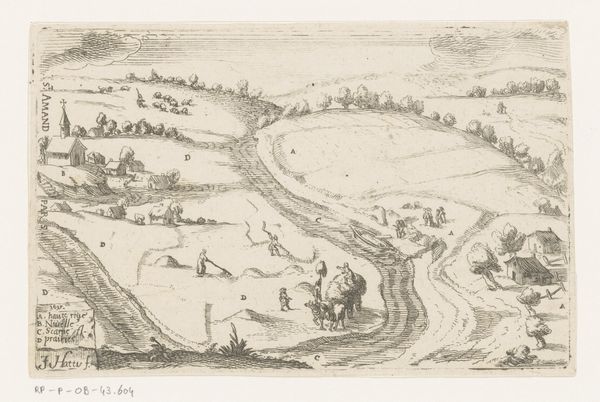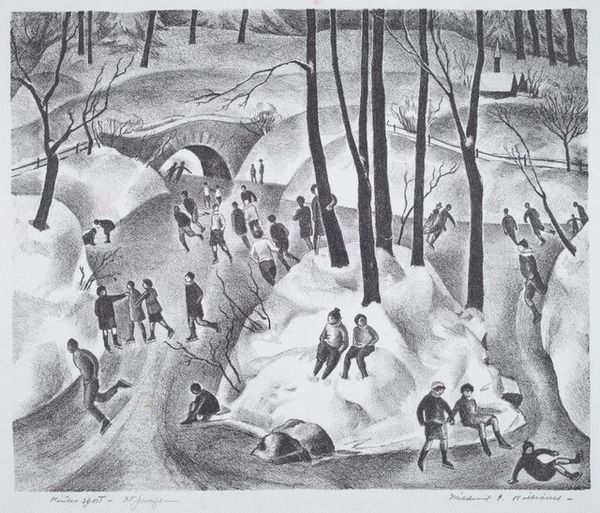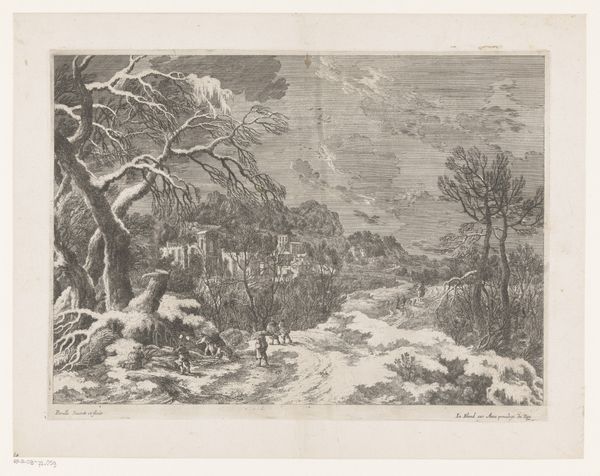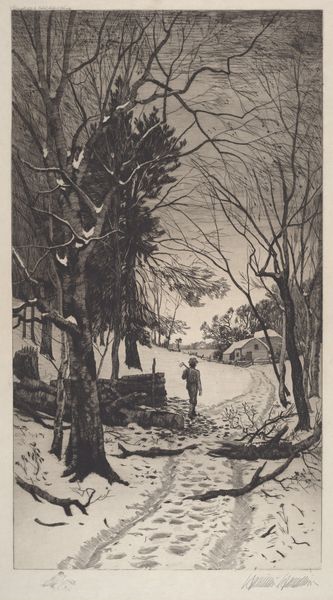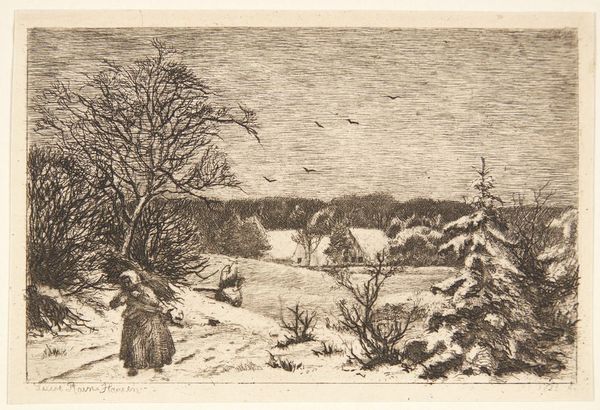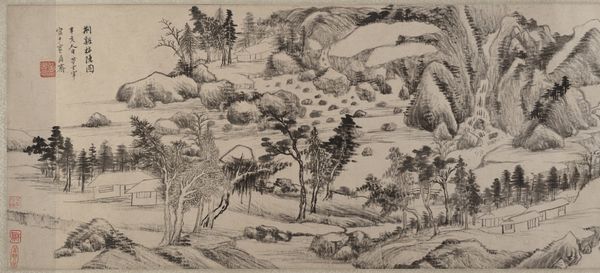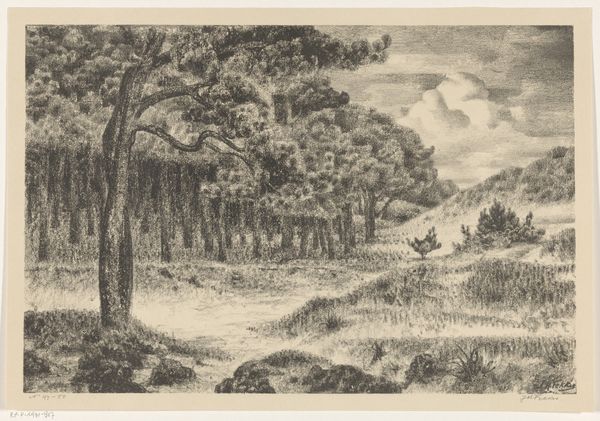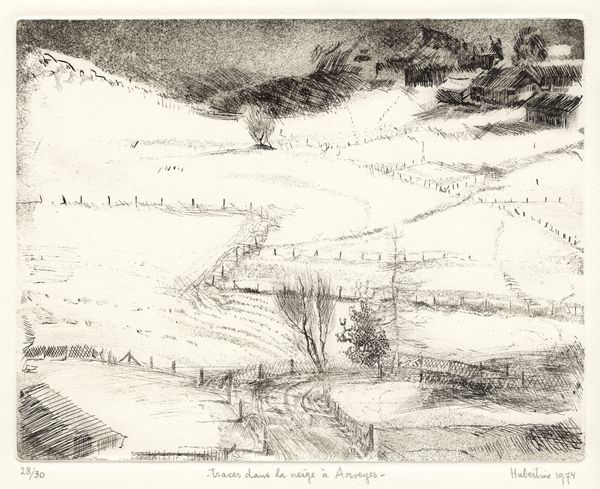
print, etching
# print
#
etching
#
landscape
#
cityscape
#
realism
Dimensions: Image: 156 x 251 mm Sheet: 292 x 403 mm
Copyright: National Gallery of Art: CC0 1.0
Editor: Here we have Esther Brock Bird’s "Entrance to Central Park, NYC," an etching from around 1934. It's so detailed, almost overwhelming at first glance. How do you interpret this complex composition? Curator: Note how the artist has constructed a deep picture plane through variations in the mark-making. Lighter, finer lines suggest distance, while denser, more assertive marks bring forward the foreground elements. This systematic differentiation sculpts our spatial understanding. What do you observe about the composition as a whole? Editor: The way the trees frame the scene creates a sense of depth, but their branches also act like a screen, almost obscuring the activity behind them. Curator: Precisely. The network of branches functions as a structural grid, a compositional scaffolding. It is a rhythmic interplay between opacity and transparency, controlling our access to the vista beyond. Further, observe the tonal contrasts: How do the dark values of the vehicles and figures interact with the lighter pathways? Editor: I see how the light and dark contrast creates movement through the scene. The darker areas stand out. The eye is drawn from one car to another across the composition. Curator: It is also useful to consider how the various visual elements, through repetition and variation, create a structured visual field for the observer. Have a look at how this distribution impacts the overall effect of the print. Editor: That's a fascinating way to look at it. I was focused on the realistic depiction, but now I see the abstract structure holding it together. Curator: Indeed. By understanding the compositional scaffolding, we begin to see how the artist creates a sense of movement through the structure and variations, controlling how our access to the picture plane directs our gaze.
Comments
No comments
Be the first to comment and join the conversation on the ultimate creative platform.

